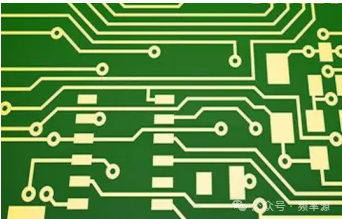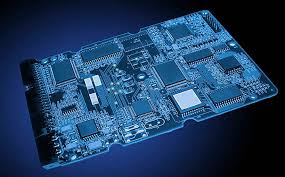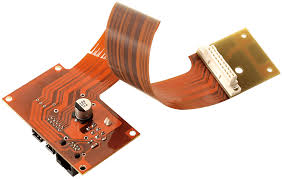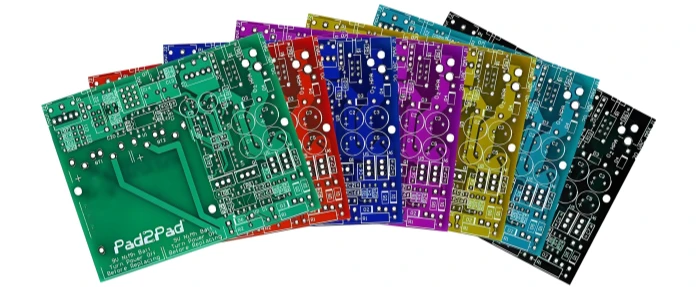Key Points of SPI Signal Series Resistor Matching
By PCBA PrototypePublished On: 2025-01-09Categories: PCB Design, PCB layout0 Comments on Key Points of SPI Signal Series Resistor Matching
By PCBA PrototypePublished On: 2025-01-09Categories: PCB Design, PCB layout0 Comments on Key Points of SPI Signal Series Resistor Matching

In the field of electronic circuits, the impedance matching of SPI signal lines is of utmost importance, especially in high – speed application scenarios. SPI (Serial Peripheral Interface), as a commonly used serial communication protocol, is widely applied in various electronic devices such as displays, WIFI Bluetooth modules, SRAM, and ADC. With the continuous increase in the operating speed of electronic devices, the signal integrity of SPI signal lines has become a key consideration, and impedance matching is one of the important means to ensure signal quality.
I. Complexity of SPI Signal Line Impedance Matching
Whether the SPI data bus requires impedance matching by series – connecting resistors is not a question that can be simply answered. Its complexity stems from multiple aspects. Firstly, different SPI application scenarios have significantly different requirements for signal quality. In low – speed SPI applications, problems such as signal transmission delay and reflection may not be obvious, so the demand for impedance matching is relatively low. However, in high – speed SPI applications, the frequency of the signal increases significantly, and the transmission characteristics of the signal on the transmission line change remarkably. At this time, without appropriate impedance matching, the signal may experience serious reflection, distortion, and other issues, thus affecting the performance of the entire system.
For example, in high – speed SPI – interface displays, the accuracy and stability of data transmission are directly related to the image display quality. If the impedance matching of the SPI signal line is not carried out, signal reflection during transmission may cause problems such as image noise, blurring, or even incorrect display. Similarly, in the SPI communication of WIFI Bluetooth modules, unstable signals may cause data transmission errors, reducing the reliability and transmission rate of communication and affecting the wireless connection performance of the device.
II. Necessity of Impedance Matching in High – Speed SPI Applications
In high – speed SPI application scenarios, understanding and implementing impedance matching is particularly crucial. Taking the SPI interface of SRAM as an example, when the microcontroller performs high – speed data read – write operations with SRAM, the rapidly changing signal edges propagate on the transmission line. If the impedance of the transmission line does not match the impedance of the source or load, the signal will reflect at the impedance discontinuity point. The reflected signal is superimposed on the original signal, which may cause deviation in the signal level received by the receiving end, resulting in data misjudgment.
In the SPI – interface application of ADC (Analog – to – Digital Converter), high – precision conversion requires the input signal to have good stability and accuracy. Signal distortion caused by impedance mismatch may cause deviation in the analog signal collected by the ADC, thus affecting the accuracy of the conversion result and ultimately reducing the measurement accuracy and performance of the entire system.
III. Exploration of Methods for Achieving Impedance Matching of SPI Signal Lines
Impedance matching of SPI signal lines is usually achieved by series – connecting resistors on the signal lines. The resistance value of the series – connected resistor needs to be accurately calculated and selected according to the characteristic impedance of the transmission line and the impedance of the source and load ends. Generally, based on the measured or known transmission line parameters, combined with the equivalent impedance of the source and load ends, the appropriate series – connected resistor value can be calculated using relevant impedance – matching formulas.
During the actual circuit design process, in addition to selecting the appropriate series – connected resistor value, factors such as the power, accuracy, and temperature coefficient of the resistor also need to be considered. For example, at high – frequency signals, the parasitic parameters (such as inductance and capacitance) of the resistor may have an additional impact on the signal. Therefore, a high – precision resistor with low parasitic parameters needs to be selected. At the same time, in order to ensure the stable performance of the resistor at different operating temperatures, its temperature coefficient also needs to be considered, and a resistor with a relatively small temperature coefficient should be selected as much as possible.
IV. Conclusion and Prospect
The impedance matching of SPI signal lines is a crucial link that cannot be ignored in the design of high – speed electronic devices. With the continuous development of electronic technology, the speed and complexity of SPI applications will continue to increase, and the requirements for signal integrity will become higher and higher. In – depth understanding and mastery of the impedance – matching technology of SPI signal lines are of great significance for improving the performance, reliability, and stability of electronic devices. In future circuit designs, engineers need to continuously pay attention to and study new impedance – matching technologies and methods to adapt to the ever – changing needs of electronic design and ensure that SPI communication can operate stably and efficiently in various high – speed application scenarios.
V. Further Considerations and Debates
Some may claim that they have never series – connected a resistor and have never encountered any problems. Indeed, not having series – connected a resistor doesn’t necessarily mean you’re wrong, nor does it mean you’re definitely right when it comes to SPI data lines. Whether to series – connect a resistor for impedance matching is a controversial issue, which is also the case on many electronic forums.

TI has an application note with a statement: “Some remarks suggest that impedance matching is not required when the wire length is only a few meters or the transmission efficiency is very low. Don’t believe such claims.” Does this imply that these major manufacturers have also joined this debate? I’ve witnessed extremely intense debates that escalated to the point of people making phone calls to curse at each other. However, the more intense the online debate, the more you can discover a pattern. That is, both sides of the debate are actually not directly confronting each other but rather avoiding the key points, deliberately evading each other’s viewpoints, and exaggerating the importance of their own viewpoints. This turns what could have been a good learning – based communication activity into a mere verbal dispute.
Regarding SPI, here are my viewpoints.
First, we need to understand under what circumstances signal transmission requires impedance matching. According to transmission line theory, impedance matching needs to be considered only when the wavelength of the signal is approximately the same as the length of the wire. The reason for saying “approximately” is that there is no exact threshold. The effect of the transmission line is gradually manifested. Generally, the evaluation criterion is that when the length of the wire is greater than 1/10 to 1/8 of the signal wavelength, the transmission line effect needs to be considered, and impedance matching must be carried out to prevent waveform distortion caused by signal reflection. For example, the bandwidth of the analog telephone line voice signal is only 4 kHz, but the telephone system still needs to consider impedance matching, such as matching to 600 ohms or 900 ohms. Because the length of the telephone line can be several kilometers or even more than ten kilometers, which is greater than 1/10 of the signal wavelength of 37 kilometers. If the impedance is not matched, an echo may be heard when making a call. Digital signals are a bit more complex. Since square – wave signals have many harmonic components, the steeper the rising and falling edges, the higher the signal frequency spectrum. It cannot be calculated based on the fundamental frequency, so another way is used to describe it. That is, dividing the signal transmission time by the signal rise time or fall time. If this ratio exceeds 10%, impedance matching is required. The transmission time is equal to the length of the wire divided by the speed of the electromagnetic wave in the wire, and the speed of the electromagnetic wave in the wire is less than the speed of light (in a vacuum). In the copper wires of a PCB (Printed Circuit Board), the speed of the electromagnetic wave is generally half of the speed of light.

So, does SPI need impedance matching?
From the previous analysis, SPI indeed does not require impedance matching when the operating frequency is not high and the connection length is not long, which is the scenario for most applications. However, in some actual situations where the frequency is not high and the wire is not long, resistors can still be seen in series on the SPI signal lines. Why is this? First of all, these resistors are not for impedance matching, so they cannot be explained by transmission line theory. The reason for series – connecting these resistors is that we often use general – purpose devices as SPI data interfaces, such as the GPIO (General – Purpose Input/Output) ports of single – chip microcomputers or FPGAs (Field – Programmable Gate Arrays). Different from the open – collector with pull – up resistor structure of I2C, these ports of SPI are push – pull structures with strong driving capabilities, that is, the output impedance is very small. Due to the distributed inductance and distributed capacitance of the PCB wiring connected to them, if the output signal has too fast a rising or falling edge, ringing will occur. At this time, a resistor is needed to reduce the Q – value of the loop to avoid oscillation. In other words, the series – connected resistor and the distributed capacitance of the signal line, or sometimes simply adding a capacitor, form a low – pass filter, which extends the rise and fall time and reduces the signal bandwidth.

VI. How to Perform Impedance Matching
When the SPI signal frequency is relatively high and the connection length is long, impedance matching is undoubtedly necessary. But how to do it specifically? First of all, the SPI standard does not specify the impedance of the data line like the USB standard. The reason is that the communication speed of SPI is not fixed and completely depends on the designer and the limit parameters of the device. The same goes for impedance matching. There is no standard, which gives designers a lot of choices. Two common methods for transmission line matching are series – resistance matching at the signal output end or parallel – resistance matching at the receiving end. However, the disadvantage of parallel – connecting a resistor to ground for pull – down or to the power supply for pull – up is that it will increase the power consumption of the driver. Therefore, the former method is more commonly used. In addition, the SPI data signal wiring must be designed in accordance with the principles of high – speed PCB layout. The characteristic impedance of the trace should be determined, and parameters such as the trace width and spacing should be calculated. If this is not done, there will be no fixed object for matching, and what’s the point of talking about impedance matching? The characteristic impedance is generally selected to be the same as that of other data lines on the PCB that need to be matched. If there are no other such data lines, it is generally selected as 50 ohms or 90 ohms, etc. After determining the above two aspects, the series – connected resistor can be easily selected. Generally, the output impedance of the driver is between 10 – 30 ohms. If the characteristic impedance of the transmission line is 50 ohms, the series – connected resistor can be selected as 22 or 33 ohms, so that the sum of the output internal resistance and the series – connected resistor is basically equal to the characteristic impedance of 50 ohms.










